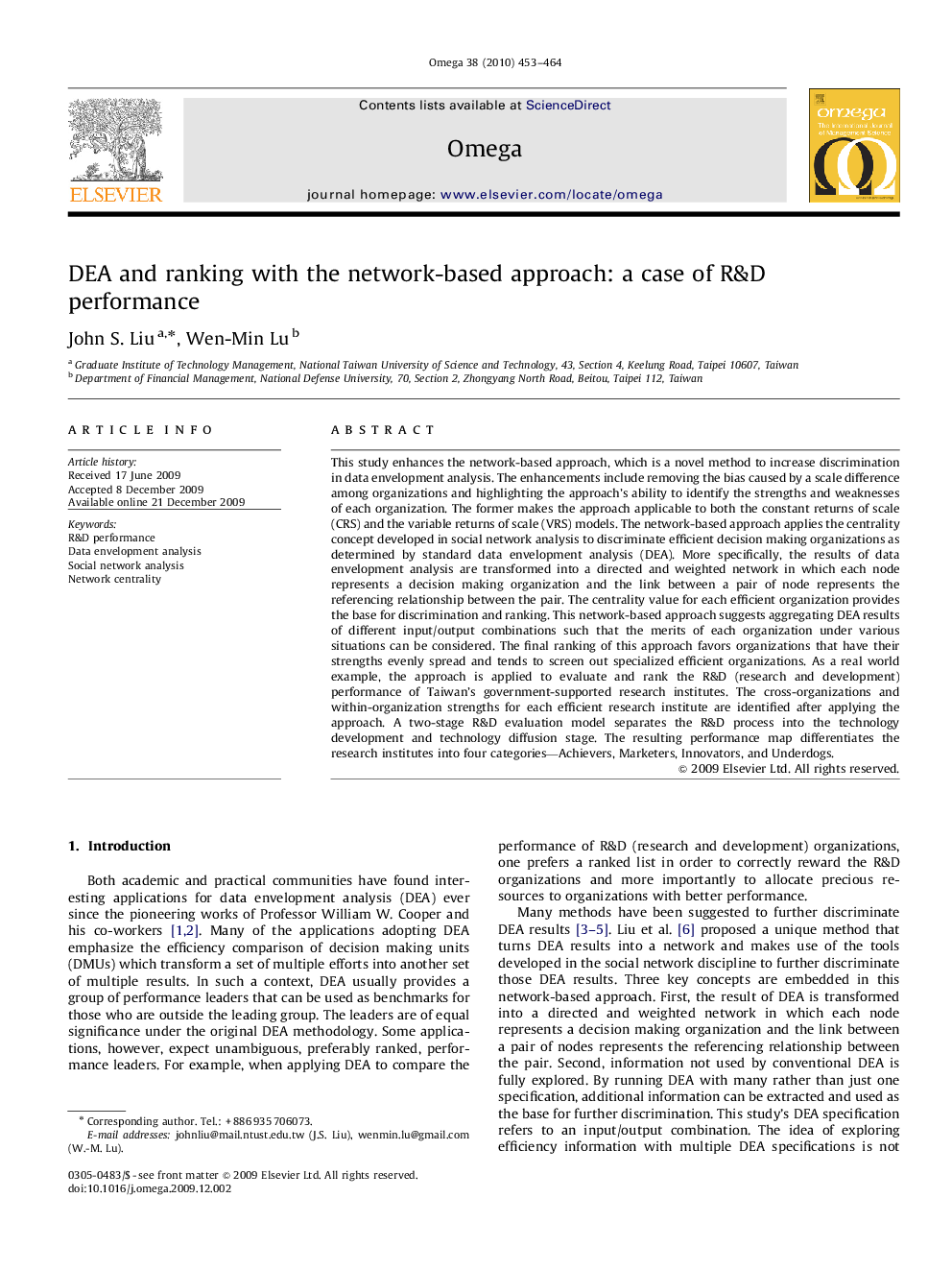| کد مقاله | کد نشریه | سال انتشار | مقاله انگلیسی | نسخه تمام متن |
|---|---|---|---|---|
| 1033001 | 943276 | 2010 | 12 صفحه PDF | دانلود رایگان |

This study enhances the network-based approach, which is a novel method to increase discrimination in data envelopment analysis. The enhancements include removing the bias caused by a scale difference among organizations and highlighting the approach's ability to identify the strengths and weaknesses of each organization. The former makes the approach applicable to both the constant returns of scale (CRS) and the variable returns of scale (VRS) models. The network-based approach applies the centrality concept developed in social network analysis to discriminate efficient decision making organizations as determined by standard data envelopment analysis (DEA). More specifically, the results of data envelopment analysis are transformed into a directed and weighted network in which each node represents a decision making organization and the link between a pair of node represents the referencing relationship between the pair. The centrality value for each efficient organization provides the base for discrimination and ranking. This network-based approach suggests aggregating DEA results of different input/output combinations such that the merits of each organization under various situations can be considered. The final ranking of this approach favors organizations that have their strengths evenly spread and tends to screen out specialized efficient organizations. As a real world example, the approach is applied to evaluate and rank the R&D (research and development) performance of Taiwan's government-supported research institutes. The cross-organizations and within-organization strengths for each efficient research institute are identified after applying the approach. A two-stage R&D evaluation model separates the R&D process into the technology development and technology diffusion stage. The resulting performance map differentiates the research institutes into four categories—Achievers, Marketers, Innovators, and Underdogs.
Journal: Omega - Volume 38, Issue 6, December 2010, Pages 453–464